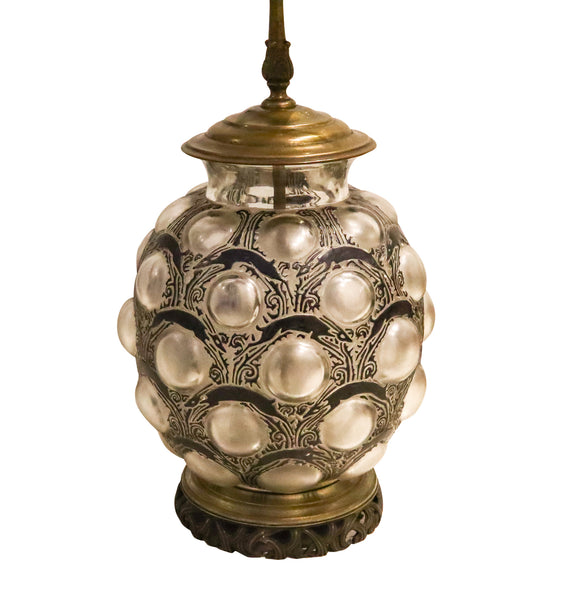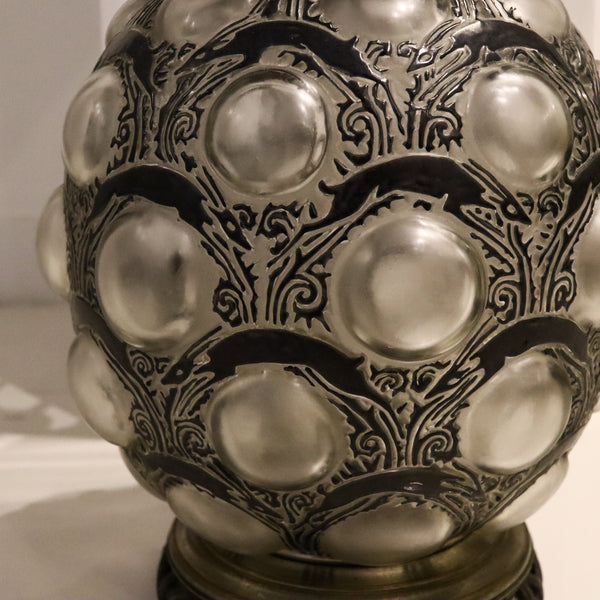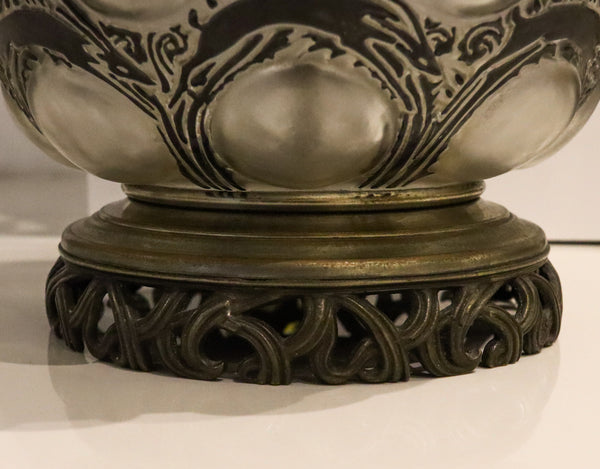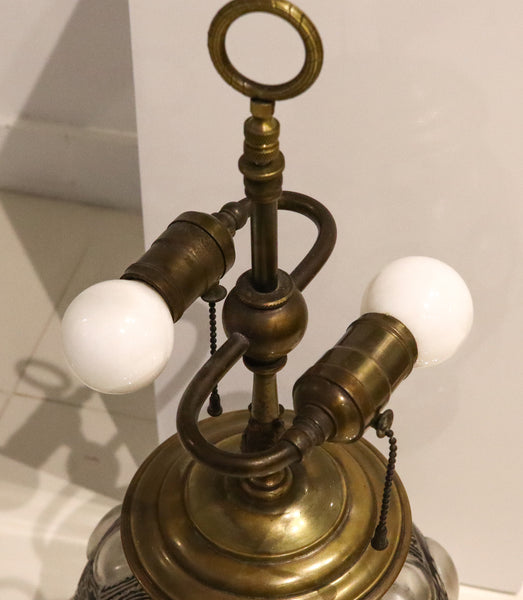Rene Lalique France 1925 Art Deco Lamp Antilopes Vase In Clear Art Glass With Black Enamel Model 875
Antilopes vase lamp designed by Rene Lalique (1860-1945).
Beautiful and desirable Antilopes crystal vase, created in France by Rene Jules Lalique in 1925. This vase was created on November 2, 1925 and is the large early one, with leaping antelopes, crafted from pressed clear and frosted art-glass and embellished with applications of black enamel. Has been converted into an electric lamp during the mid-century period, circa 1960.
The vase itself have a measures of 274 mm by 264 mm (10.75 x 10.4 Inches). The lamp total height is 26 Inches (66 Cm).
Rene Lalique, born in 1860 in Aÿ-Champagne, René Lalique was to become one of the greatest names of his time, renowned both as a jeweler and a master glassmaker. His unique and instantly recognizable style was a major influence on the Art Nouveau and Art Deco movements.
In 1876 René Lalique took up an apprenticeship with a leading Parisian jeweler and goldsmith by the name of Louis Aucoc. He studied at the Ecole des Arts Décoratifs de Paris and spent two years in England, before becoming a freelance designer for jewelers such as Jacta, Boucheron, Cartier and Gariod. In 1885, he took over Jules Destapes’ atelier in Paris and became a full-fledged jeweler.
René Lalique had begun to take a serious interest in glass, when in 1907 he met the famous perfumer François Coty. He began creating perfume bottles for specific perfumes both for Coty and other perfumers: for the first time in the history of the perfume industry, the recipient had a direct symbolic link with the contents. In 1913, René Lalique bought the Combs-la-Ville Glassworks, where he began focusing on techniques that allowed him to produce in large quantities, in order to reduce costs and make his creations more affordable to a wider population.
Lalique’s works are on display in approximately 3 dozen international museums, including the Corning Museum of Glass in Corning, New York, which possesses the largest publicly displayed collection of Lalique glass in the world. The Musee Lalique in Wingen-sur-Moder, France is the main museum dedicated to Lalique in his homeland and contains 1,500 pieces. This village was the site of Lalique’s glass factory.
Literature: Rene Lalique, Catalogue Raisonne De La Oeuvre De Verre, Felix Marcilhac. model 875, Pp-410, Illustrated.
It is in great shape and working condition.
INVENTORY REF: D0000MENN/.1111












